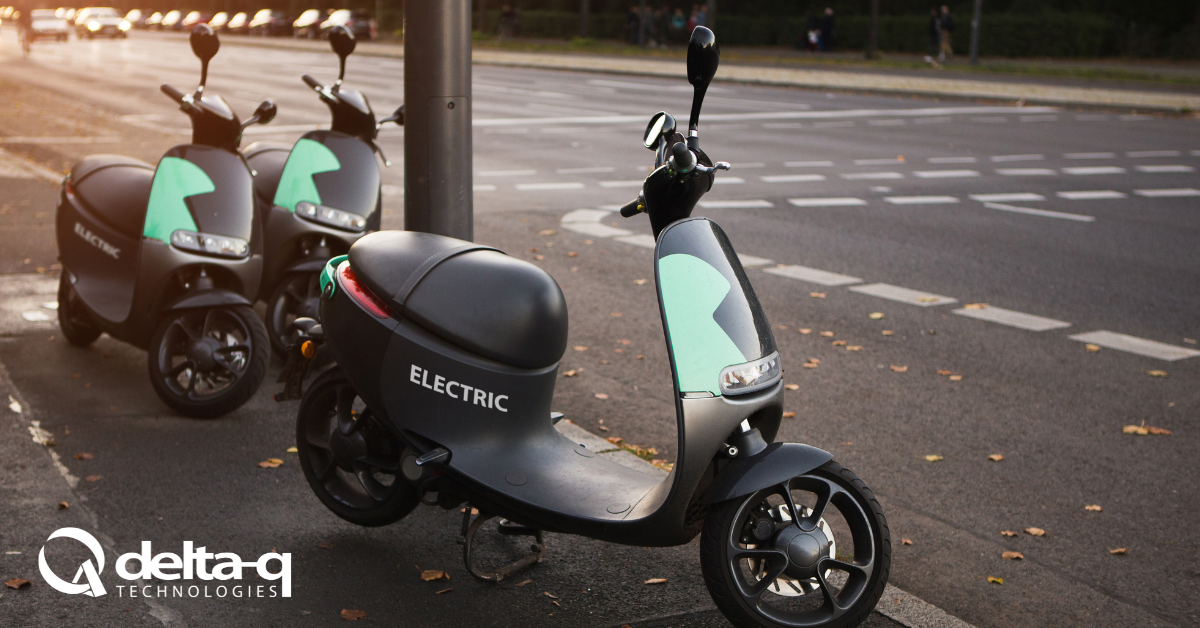
Historically, the range of electric vehicles (EVs) has not matched gas-powered vehicles, but newer EVs are managing to close that gap. There are several EVs on the market today that can travel over 300 miles before needing a recharge1, but further innovations are needed to exceed the average gas-powered vehicle’s range of 412 miles.
In part three of this blog series, we discuss several factors EV equipment designers should consider to maximize range and alleviate users’ anxiety over range constraints.
Aerodynamics
Drag is a force that impedes any object’s acceleration, and the faster that object gets, the more drag it experiences. Doubling an object’s speed quadruples its drag. Drag will prevent a vehicle from reaching higher speeds and reduce its efficiency in drawing power from the motor. A vehicle with good aerodynamics will be less affected by drag, but lift should be considered as well.
Lift
At very high speeds, forces will start to push the vehicle off the ground—controlling lift is very important. These forces make it harder to control the vehicle and reduce tire friction on the road. While most EVs are not capable of such high speeds, it is worth considering for simulations.
Battery Chemistry
One reason Tesla vehicles can outperform their competition on range is their choice of battery chemistry. Tesla batteries contain aluminum2 rather than the manganese that is most common in EV batteries. The theoretical tradeoff is the lifespan of these aluminum-based batteries. It is suspected to be shorter, but it has not been confirmed since most Tesla vehicles have been on the road for less than 10 years. These batteries also tend to heat up faster and therefore require more elaborate cooling solutions.
Battery Temperature
Batteries operate at maximum efficiency around 20oC/68oF, or just below room temperature. As temperature varies higher or lower, they start to lose capacity, which will reduce the EVs range. Batteries heat up as they charge and discharge, so having cooling measures in place is important. Potential solutions include ventilation, fan-cooling, or liquid-cooling. Storing the vehicle in a temperature-controlled garage rather than outside on warm, sunny days will help reduce the need for cooling when the car starts. Batteries can also heat up relative to how much current is drawn from them, so minimizing that draw will further help in keeping them cool. Keep in mind that the reverse is also true: cold batteries need to be warmed up to their optimal temperature for optimal performance.
Car Accessories
In an EV, everything is run off the batteries—there are no backup power systems. That means the radio, lights, wipers, displays, and every other car accessory is drawing power from the battery pack when in use. Choosing more efficient accessories like LED lighting versus halogen or xenon, or heat pumps instead of heater coils and AC compressors, will maximize the portion of the battery capacity dedicated to driving the car.
Weight
Weight may be an obvious factor, but it creates an interesting paradox. A heavier car will take more power to move, but as more batteries are added to compensate for this, the total weight of the car increases. Reducing vehicle size, choosing lighter materials, and limiting accessories will help reduce the power required to put the vehicle in motion.
Regenerative Braking
An added benefit of electric vehicles is that the engine can be used to slow the car down instead of traditional braking. This feature can return power back to the batteries and give a boost to the vehicle’s range (especially on a trip with plenty of stopping and starting!).
Want to learn more?
To learn more about electric vehicle design considerations, read our blogs on the topic below or visit our landing page for the latest application and technology trends in e-mobility.
EV Design Considerations: Electric Motor Fundamentals
EV Design Considerations: Acceleration & Top Speed




